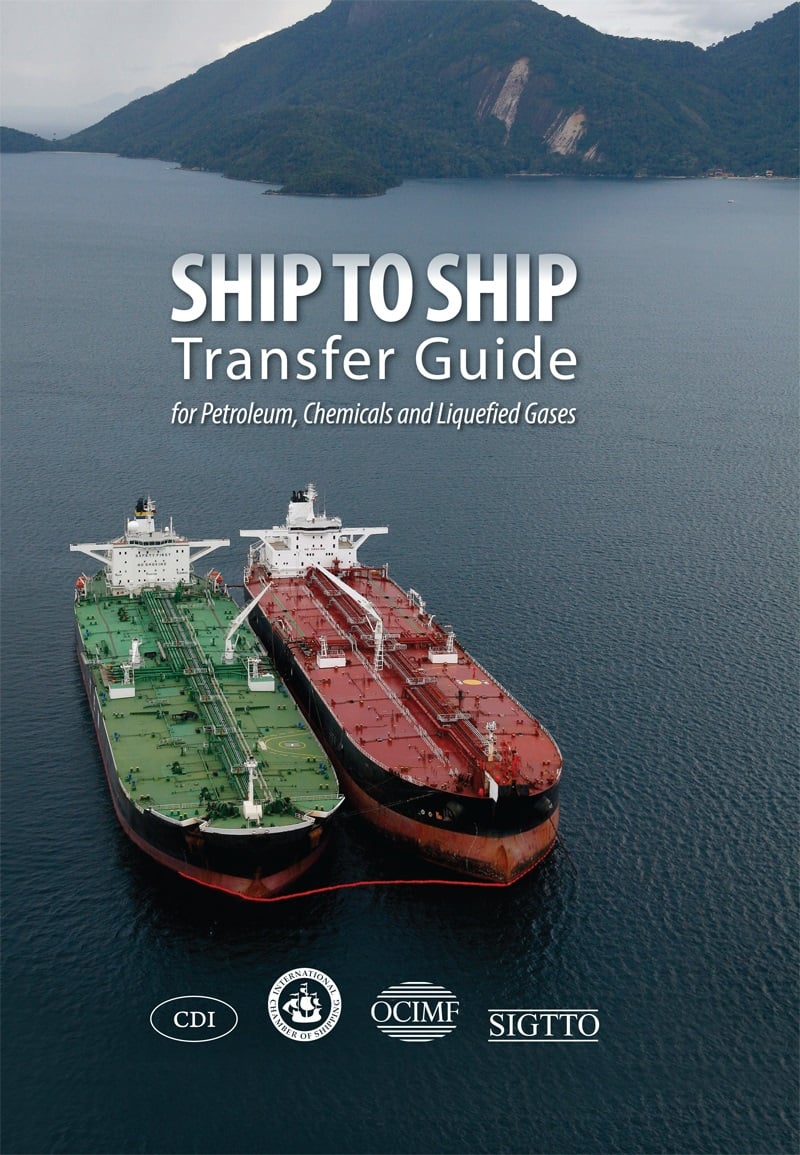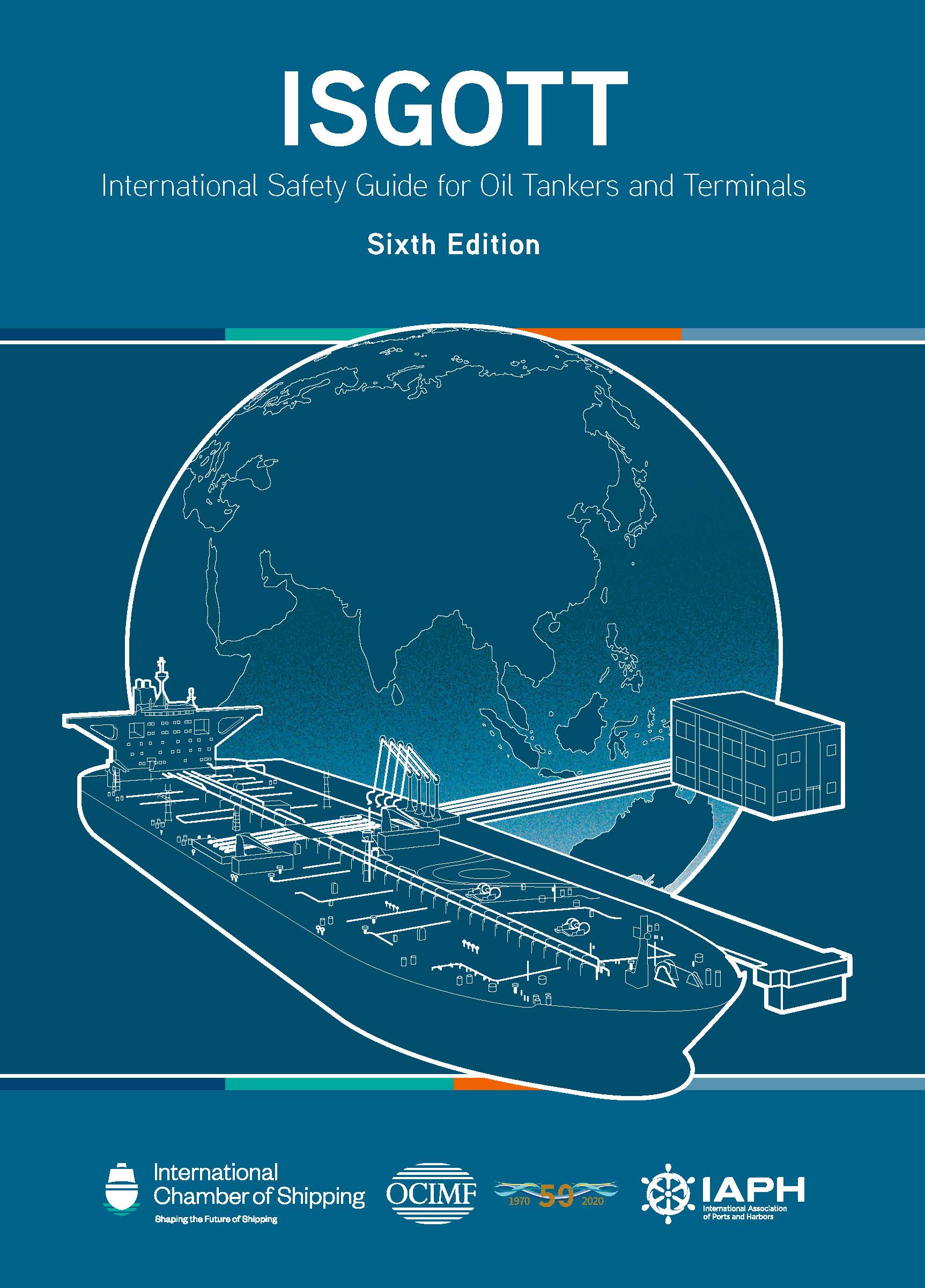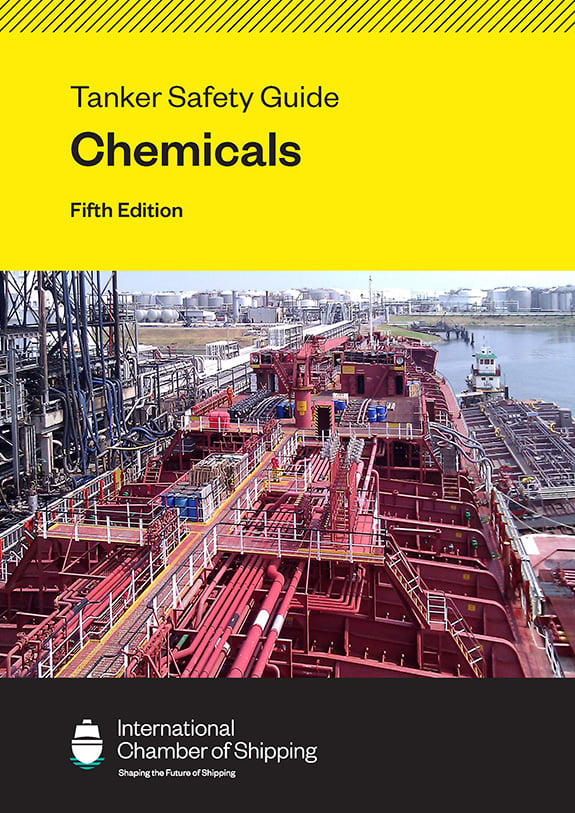In stock
Tanker Safety Guide (Liquefied Gas)
£ 470
The Tanker Safety Guide (Liquefied Gas), fourth edition, is the definitive industry guide to support gas carrier operators conduct safe and efficient operations. This comprehensive guide, a carriage requirement under the national regulations of many flag States, has been fully updated to align with the latest edition of the International Safety Guide for Oil Tankers and Terminals (ISGOTT 6).
All content included in this latest edition has been developed and reviewed by senior industry experts with direct experience in the field and has been presented in a user-friendly and modernised format, with a significant upgrade in the visual representation of technical information, including infographics and flow diagrams.
New in this edition of the guide:
- Alignment of the ship/shore safety checklists with ISGOTT 6.
- Emphasis on simplifying the human element processes on board to reduce the chance of root cause accidents attributed to human element.
- New elements on bunkering and simultaneous operations.
- Expanded guidance on rollover, enclosed spaces and mooring.
- Updated section on reliquification to incorporate new technologies.
- Useful and relevant annexes pulled into the main body of the guide for easy reference.
Tanker Safety Guide (Liquefied Gas), fourth edition, has been written for:
- On board deck and technical officers.
- Those training or providing training in liquefied gas transportation.
- Anyone engaged in the transportation of liquefied gas by sea.
Additional Information
| Author | International Chamber of Shipping |
| Publisher | International Chamber of Shipping Publications |
| Edition | Fourth Edition |
| Publication month | 2023 - October |
| ISBN | 978-1-913997-45-8 |
| Shipping Weight | 1.65Kg |
Resources
Contents
Contents
Abbreviations Definitions Chapter 1 The properties and hazards of liquefied gases 1 The properties and hazards of liquefied gases 1.1 Introduction 1.2 Flammability 1.3 Occupational health hazards 1.3.1 Toxicity 1.3.2 Asphyxia 1.3.3 Anaesthesia 1.3.4 Cold burns and frostbite 1.4 Reactivity 1.4.1 Self-reaction 1.4.2 Reaction with air 1.4.3 Reaction with other cargoes 1.4.4 Reaction with other materials 1.5 Corrosivity 1.6 Vapour characteristics 1.7 Low temperature effects 1.7.1 Brittle fracture 1.7.2 Spillage 1.7.3 Cooldown 1.7.4 Ice formation 1.7.5 Rollover (LNG) 1.7.6 Rollover (LPG) 1.8 Pressure 1.8.1 Absolute and gauge pressure 1.8.2 High and low pressure effects 1.8.3 Pressure surge 1.8.4 Pressurised systems 1.8.5 Reciprocating compressors 1.8.6 Cargo tank pressures 1.8.7 Liquid gas samples 1.8.8 Pressure relief valves 1.8.9 Cargo heaters
Chapter 2 General precautions 2 General precautions 2.1 Introduction 2.2 Cargo information 2.3 Mooring 2.3.1 Mooring at buoy moorings 2.4 Emergency towing-off pennants 2.5 Access to ship 2.5.1 Means of access 2.5.2 Lighting 2.5.3 Unauthorised access 2.5.4 Persons smoking or intoxicated 2.6 Warning notices 2.6.1 Permanent warning notices 2.6.2 Temporary warning notices 2.7 Craft alongside 2.8 Weather precautions 2.8.1 Wind conditions 2.8.2 Electrical storms 2.8.3 Cold weather 2.8.4 Operations in ice and/or severe sub-zero temperatures 2.9 Openings in deckhouses and superstructures 2.10 Machinery spaces 2.10.1 Funnel sources of ignition 2.10.2 Blowing boiler tubes 2.10.3 Cargo vapour 2.11 Cargo machinery room precautions 2.11.1 Cargo compressor/machinery rooms 2.12 Ship’s readiness to move 2.13 Navigation and bridge procedures 2.13.1 Ship’s transmission equipment 2.14 Environmental protection 2.15 Firefighting and fire protection 2.16 Helicopter operations
Chapter 3 Safety management 3 Safety management 3.1 Introduction 3.2 Safety culture 3.2.1 What is a safety culture? 3.2.2 Key features of an effective safety culture 3.3 The human element 3.4 The Safety Management System (SMS) 3.5 Safety information for shore personnel 3.6 Outside contractors 3.7 Risk management 3.7.1 Risk assessment process 3.7.2 Conducting risk assessments 3.7.3 Risk assessment matrix 3.8 Safe operations 3.8.1 Leadership 3.8.2 Stop work authority 3.8.3 Routine operations 3.8.4 Non-routine operations 3.9 Ship’s crewing 3.9.1 Introduction 3.9.2 Responsibility 3.9.3 Crew resources 3.9.4 Training 3.9.5 Familiarisation 3.9.6 Crew communication 3.9.7 Drills and exercises 3.9.8 Crew schedules and minimum hours of rest 3.9.9 Summary of STCW hours of rest requirements 3.9.10 Fatigue 3.9.11 Prevention of drug and alcohol abuse 3.10 Personal protection and lifesaving 3.10.1 Introduction 3.10.2 Personal protective equipment 3.10.3 Decontamination water sprays and showers 3.10.4 Canister and filter type respirators 3.10.5 Breathing apparatus 3.10.6 Safe haven 3.10.7 First aid 3.10.8 Resuscitation 3.10.9 Frostbite 3.11 Incident investigations
Chapter 4 Cargo handling plant and equipment 4 Cargo handling plant and equipment 4.1 Cargo pumps 4.1.1 Deepwell pumps 4.1.2 Fixed submerged pumps 4.1.3 Removable (emergency) submerged pumps 4.1.4 Booster pumps and deck mounted pumps 4.1.5 Hold or interbarrier space pumps 10 Tanker Safety Guide (Liquefied Gas), Fourth Edition 4.2 Compressors 4.2.1 General 4.2.2 Reciprocating compressors 4.2.3 Centrifugal compressors 4.2.4 Rootes-type compressors 4.2.5 Screw compressors 4.2.6 Heat exchangers 4.3 Inert gas systems 4.3.1 General 4.3.2 Inert gas generator 4.3.3 Scrubbers 4.3.4 Refrigeration and condensers 4.3.5 Driers 4.3.6 Use of nitrogen as inert gas 4.4 Gas combustion units 4.5 Pressure relief systems 4.5.1 General 4.5.2 Cargo pressure relief devices 4.5.3 Hold space relief devices 4.6 Vacuum relief systems 4.7 Valves 4.8 Filters and strainers 4.9 Expansion bellows 4.10 Vent and purge masts 4.11 Pipeline supports 4.12 Insulation
Chapter 5 Cargo system instrumentation 5 Cargo system instrumentation 5.1 Liquid level gauges 5.1.1 General 5.1.2 Radar gauges 5.1.3 Ultrasonic gauges 5.1.4 Float gauges 5.1.5 Capacitance probes 5.1.6 Slip-tube and fixed tube gauges 5.2 Level alarms, automatic shutdown and emergency shutdown 5.2.1 High level alarms 5.2.2 Low level alarms 5.2.3 Automatic shutdown systems 5.2.4 Emergency shutdown (ESD) systems 5.3 Pressure indicating devices 5.4 Temperature monitoring equipment 5.5 Gas detection equipment 5.5.1 General precautions 5.5.2 Infra-red detectors 5.5.3 Thermal conductivity meters 5.5.4 Combustible gas detectors 5.5.5 Chemical absorption detector tubes 5.5.6 Oxygen analysers 5.5.7 PID detectors 5.5.8 FID detectors 5.5.9 Personal gas monitors 5.5.10 Multi-gas instruments 5.6 Equipment alarm and shutdown circuits 5.7 Instrument and control air supplies
Chapter 6 Transportation of liquefied gas 6 Transportation of liquefied gas 6.1 Introduction 6.2 Basic cargo system design considerations 6.2.1 General 6.2.2 Pressurised carriage 6.2.3 Refrigerated carriage 6.2.4 Cargoes carried 6.3 The IGC Code 6.3.1 Gas carrier design standards 6.4 Cargo containment systems 6.4.1 General 6.4.2 Pressure vessel systems 6.4.3 Low pressure systems 6.4.4 Hull and insulation arrangements 6.4.5 Refrigeration systems 6.4.6 Cargo tank types 6.5 Gas carrier types and arrangements 6.5.1 Fully-pressurised gas carriers 6.5.2 Semi-pressurised gas carriers 6.5.3 Ethylene carriers 6.5.4 Ethane carriers 6.5.5 LPG carriers 6.5.6 Methane/LNG carriers 6.6 Carriage of noxious liquid substances 6.7 MARPOL 6.8 IMO Ballast Water Management Convention 12 Tanker Safety Guide (Liquefied Gas), Fourth Edition
Chapter 7 Fire hazards and precautions 7 Fire hazards and precautions 7.1 Introduction 7.2 Flammability of liquefied gases 7.3.1 Loading 7.3.2 Carriage 7.3.3 Disposal 7.4 Atmosphere control 7.4.1 General 7.4.2 Cargo tanks and piping systems 7.4.3 Hold and interbarrier spaces 7.4.4 Inert gas quality 7.4.5 Inert gas hazards and precautions 7.5 Static electricity 7.5.1 Electrostatic generation 7.5.2 Steam 7.5.3 Carbon dioxide 7.5.4 Ship/shore insulating, earthing and bonding 7.6 Precautions against sources of ignition 7.6.1 Smoking 7.6.2 Electrical installations 7.6.3 Portable electrical equipment 7.6.4 Ship’s communications equipment 7.6.5 Electrical maintenance and repairs 7.6.6 Personal electronic items 7.6.7 Aluminium equipment 7.6.8 Auto-ignition 7.6.9 Spontaneous combustion 7.7 Hot work 7.7.1 General 7.7.2 Assessment of hot work 7.7.3 Hot work permit 7.7.4 Preparations for hot work 7.7.5 Checks by officer responsible for safety during hot work 7.7.6 Actions on completion of hot work 7.7.7 Hot work flow chart 7.8 Cold work 7.8.1 Mechanically powered tools 7.8.2 Hand tools 7.9 Firefighting and fire protection equipment 7.9.1 Firefighting equipment 7.9.2 Vent mast protection screens and flame screens
Chapter 8 Cargo operations 8 Cargo operations 8.1 Introduction 8.2 Responsibility 8.3 Commissioning the cargo system 8.4 General cycle of operations 8.5 Preparation for cargo transfer 8.5.1 General 8.5.2 Pressure surge 8.6 Inerting and gassing-up 8.6.1 General 8.6.2 Inerting 8.6.3 Gassing-up 8.6.4 Methods of inerting and gassing-up 8.7 Preparations for loading 8.7.1 General 8.7.2 Cooldown of tanks and pipelines 8.7.3 Ice or hydrate formation 8.7.4 Minimum cargo tank temperature 8.7.5 Rollover precautions 8.8 Cargo loading 8.9 Cargo conditioning 8.9.1 General 8.9.2 Reliquefaction and boil-off control 8.9.3 Sloshing 8.9.4 Use of cargo as fuel 8.10 Cargo discharge 8.11 Ship-to-ship transfer 8.12 Ballasting and de-ballasting 8.13 Simultaneous operations 8.13.1 LNG bunkering simultaneous operations 8.14 Separation of cargoes 8.15 Commingling of LPG cargoes in port 8.16 Changing cargoes 8.16.1 Cargo stripping 8.16.2 Change of cargo 8.16.3 Displacing atmosphere with nitrogen/inert gas (inerting) 8.16.4 Gassing-up with vapour of the next cargo 8.16.5 Water washing after ammonia cargoes 8.17 Gas-freeing and aeration 8.18 Venting at sea 8.19 Deck storage tanks 8.20 Sampling 8.20.1 Sampling systems 8.20.2 Liquid samples 8.20.3 Vapour samples 8.21 Custody transfer measurement systems 8.22 Drydocking and repair periods
Chapter 9 Cargo equipment 9 Cargo equipment 9.1 Introduction 9.2 Plant and equipment precautions 9.2.1 Pumps 9.2.2 Compressors 9.2.3 Heat exchangers 9.2.4 Electrical equipment 9.2.5 Control and alarm systems 9.2.6 Instrumentation 9.2.7 Valves 9.2.8 Cargo vent systems 9.2.9 Expansion/contraction fittings 9.2.10 Cargo pipelines 9.2.11 Ship’s cargo hoses 9.2.12 Manifold connections using emergency release couplings 9.2.13 Inert gas systems 9.2.14 Dry air supply 9.2.15 Ventilation equipment 9.3 Equipment maintenance 9.3.1 Maintenance 9.3.2 Maintenance of electrical equipment
Chapter 10 Reliquefaction and boil-off control 10 Reliquefaction and boil-off control 10.1 The types of reliquefication systems 10.2 Types of refrigerated gas carriers 10.2.1 LPG carriers 10.2.2 LNG carriers 10.3 Reliquefaction systems 10.3.1 Plant requirements 10.3.2 Plant duties 10.3.3 Plant auxiliary functions 10.3.4 Refrigerant system auxiliary functions 10.3.5 Reliquefaction cycles 10.4 Reliquefaction plant operations (for LPG carriers) 10.4.1 General 10.4.2 Preliminary precautions 10.4.3 Cargo reliquefaction plant operations 10.4.4 Refrigerant system operations 10.4.5 Completion of reliquefaction operations 10.4.6 Glycol systems 10.4.7 Anti-freeze injection 10.4.8 Hydrate formation 10.4.9 Incondensable gases
Chapter 11 Bunkering 11 Bunkering
Chapter 12 Pressure surge effects 12 Pressure surge effects 12.1 Introduction 12.2 Generation of pressure surge 12.3 Other surge pressure effects
Chapter 13 Enclosed spaces 13 Enclosed spaces 13.1 General 13.1.1 Hazards of enclosed spaces 13.1.2 Oxygen deficiency 13.1.3 Toxic and/or flammable gases 13.1.4 The presence of inert gas 13.1.5 Oxygen enrichment 13.2 Atmosphere in enclosed spaces 13.3 Requirements for enclosed space entry 13.3.1 Planning 13.3.2 Entry permit 13.4 Testing before entry 13.4.1 Testing for entry in shipyards 13.5 Entry into enclosed spaces 13.5.1 Entry into cargo tanks 13.5.2 Entry into enclosed spaces other than cargo tanks 13.5.3 Cargo control rooms 13.5.4 Cargo pump or compressor rooms, motor rooms and airlocks 13.5.5 Engine or boiler rooms 13.6 Work in enclosed spaces 13.7 Enclosed space entry permit 13.8 Rescue from enclosed spaces 13.8.1 General 13.8.2 Preventing enclosed space accidents 13.8.3 Rescue and recovery organisation 13.8.4 The rescue operation 13.8.5 Rescue and recovery equipment
Chapter 14 Emergencies 14 Emergencies 14.1 Water leakage into hold or interbarrier space 14.2 Hose burst, pipework fracture or cargo spillage 14.3 Dispersion of liquid spill and vapour emissions by water spray 14.4 Tank leakage 14.5 Emergency discharge of cargo at sea (jettison) 14.6 Safety incidents involving personnel 14.7 Reporting
Chapter 15 Firefighting 15 Firefighting 15.1 Introduction 15.2 Firefighting organisation 15.3 Special considerations for fighting liquefied gas fires 15.3.1 Isolating the source 15.3.2 Use of water 15.3.3 Use of dry powder 15.4 Vent mast fires 15.5 Fires near to the ship 15.6 Boiling liquid/expanding vapour explosion (BLEVE)
Chapter 16 Drydocking and repair periods 16 Drydocking and repair periods 16.1 Special considerations 16.1.1 Cargo tanks and hold or interbarrier spaces 16.1.2 Instruments 16.1.3 Hot work during repair periods 16.1.4 Deck storage tanks 16.2 Recommissioning
Appendices Appendix A Ship/shore safety checklist Appendix B Conversion tables Appendix C Example hot work permit Appendix D Example enclosed space entry permit References
|
Foreword
Foreword The purpose of the Tanker Safety Guide (Liquefied Gas) is to provide up-to-date information on recognised industry best practices for the guidance of personnel serving on ships carrying liquefied gases in bulk. The information in this Guide serves to reinforce the provisions of the latest version of the International Code for the Construction and Equipment of Ships Carrying Liquefied Gases in Bulk (IGC Code), developed and published by the International Maritime Organization (IMO). This fourth edition of the Guide, which was first published in 1978, takes into account the latest developments in management philosophy, design and operations. These include regulatory issues, such as the implementation of the International Safety Management (ISM) Code and the International Ship and Port Facility Security (ISPS) Code, and operational practices such as the reliquefaction of liquefied natural gas (LNG) and developments in emergency shutdown (ESD) practices. The Guide is intended to be a companion to the Tanker Safety Guide (Chemicals) published by International Chamber of Shipping (ICS). The Guide deals primarily with operational matters and good safety practices. It does not include recommendations on the construction or maintenance of gas carriers or their equipment as such standards are set by IMO, national flag states and classification societies. Likewise, the Guide does not address the operation of specific items of equipment or their maintenance and repair, although in some cases broad references are made to these matters. Nor does the Guide address commercial matters such as tank preparation, cargo quality or equipment performance standards as these are set by industrial practices and the requirements of liquefied gas cargo owners. The latest edition of these guidelines further explores the human element and how addressing the human element will help ensure safe and efficient operations. This Guide also expands further on enclosed space entry and safe entry into these spaces. This newest edition also includes changes to fully align with the International Safety Guide for Oil Tankers and Terminals (ISGOTT) (co-authored by ICS, Oil Companies International Marine Forum (OCIMF) and the International Association of Ports and Harbors (IAPH)) and the Guide’s ship/shore safety checklists have been amended to align with these. To promote consistent and uniform safe operational practices, it is recommended that a copy of this Guide is available on board all gas carriers. It is also recommended that a copy of the latest edition of ISGOTT is also provided on board as a significant part of the content is relevant to gas carriers. It is emphasised that this Guide is intended to complement, not supersede, any company safety and operational guidelines or ship emergency plans, including safety procedures contained in an approved safety management system (SMS) required by the ISM Code. It should also be borne in mind that in all cases the advice given may be subject to local or national regulations, and that terminal operators have their own safety procedures which could affect cargo handling operations and the measures to be adopted in emergencies. The master and all personnel should be aware of and comply with those regulations and procedures. Their existence will be highlighted by the use of the ship/shore safety checklist included in Appendix A of this Guide which, together with its guidelines for completion, remains a fundamental part of establishing safe conditions for the transport and handling of liquefied gases. Acknowledgements ICS extends its thanks to the following for their assistance in researching and reviewing this publication: • Captain Iain Scally, NYK Corporation; • Seapeak; • Gazocéan; • Donnelly Tanker; • Fleet Management Ltd; and • Mitsui O.S.K. Lines (MOL). Figure 10.13 is based on technology by Air Liquide Advanced Technologies (https://advancedtech.airliquide.com) and figure 10.12 is based on technology by Hanwha. Inclusion of a proprietary design is as an example only and ICS does not endorse any particular technology. Particular thanks to NYK Corporation for supplying photographs for this edition. Editorial notes In this guide, the word ‘must’ is used where guidance relates to a regulation, and the word ‘should’ is used for guidance that is generally considered best practice. Always refer to the latest versions of regulations as they may have been updated after this guide was published. The term ‘crewing’ is used instead of the term ‘manning’ where possible, in line with guidance encouraging the use of inclusive language in the ICS Diversity and Inclusion Toolkit for Shipping. Feedback is welcome, please contact [email protected]. |
 Fourth Edition.jpg)




